Bloemencorso Loenhout - Belgium
After three months in Bali, a week in London, and a month in Lisbon, I decided to come back home for a while. Not because I didn’t like my new digital nomad life – no, on the contrary, I loved it – but because there is a special event in my hometown that I just could not miss: Bloemencorso Loenhout.
Okay, so I realize I am a bit “different” when it comes to social interactions. I have amazing friends who I love to spend time with, but that are about the only people I can stand for a prolonged period of time. I don’t like going out. I don’t like going to a bar. I get anxiety from weddings, baby showers, or any other social obligation. This means I also have no hobbies or volunteer work that involves large groups of people, except for Bloemencorso Loenhout.
Bloemencorso Loenhout is a yearly event on the second Sunday of September. It started in 1952, as a celebration of a new road to the next village. So, what was this event? A flower parade. Don’t image too much spectacular floats yet – we’re still talking about the fifties here – but the event was such a success that the village decided to make it a yearly celebration. Year after year, the flower parade grew bigger and bigger.
This year was the 70th time the Bloemencorso marched through the streets of Loenhout. Those who have excellent math skills already figured out this means there was only 1 year the Bloemencorso didn’t happen: 2020 (you know, the year the entire world is trying to forget). I’ve been helping out since 2012, but it’s only been a few years since I stepped up my own game. Let me walk you through all the work that happens behind the scenes to organize this yearly flower parade.
The design
Everything starts with an idea. I still remember being 9 years old and seeing a huge Harry Potter float coming down the street. My sister and I were already obsessed with Harry Potter by that age, so of course, that float is forever branded into our memory. As faith would have it, I ended up joining that exact neighborhood community who made that Harry Potter float years later.
The designers of Westhoek, the neighborhood community which I’m part of, have years of experience. Right now, the designer team consists of three people. Each has their own expertise and brings a different edge to the design. Together, they design absolutely stunning designs.
Each neighborhood community (there are 12 right now) has their own method and habits. With Westhoek, there’s some mystery around the whole designing process. Nobody is allowed to anything about the theme, color combination, or story until the yearly barbeque where the designers present this year’s float.

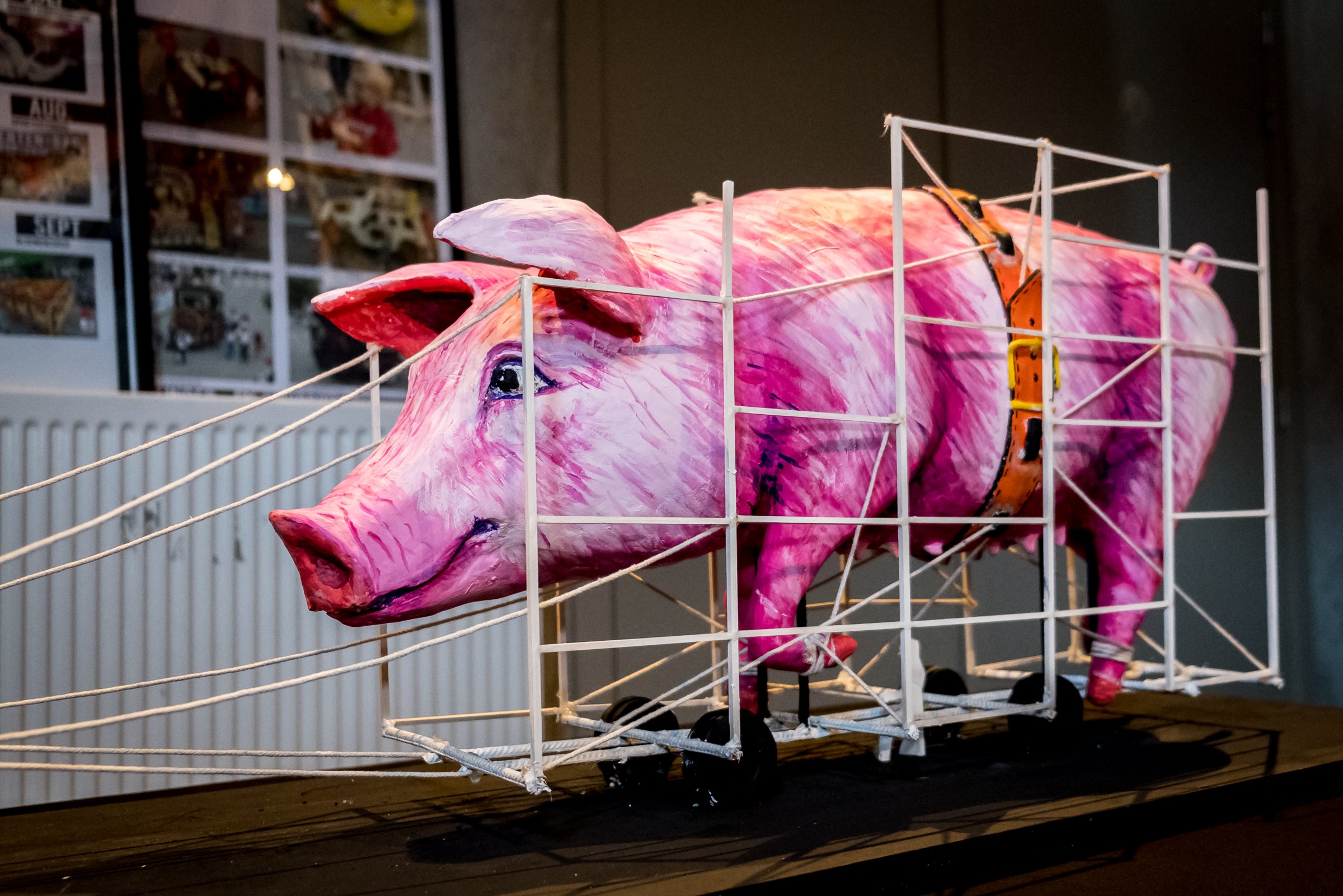
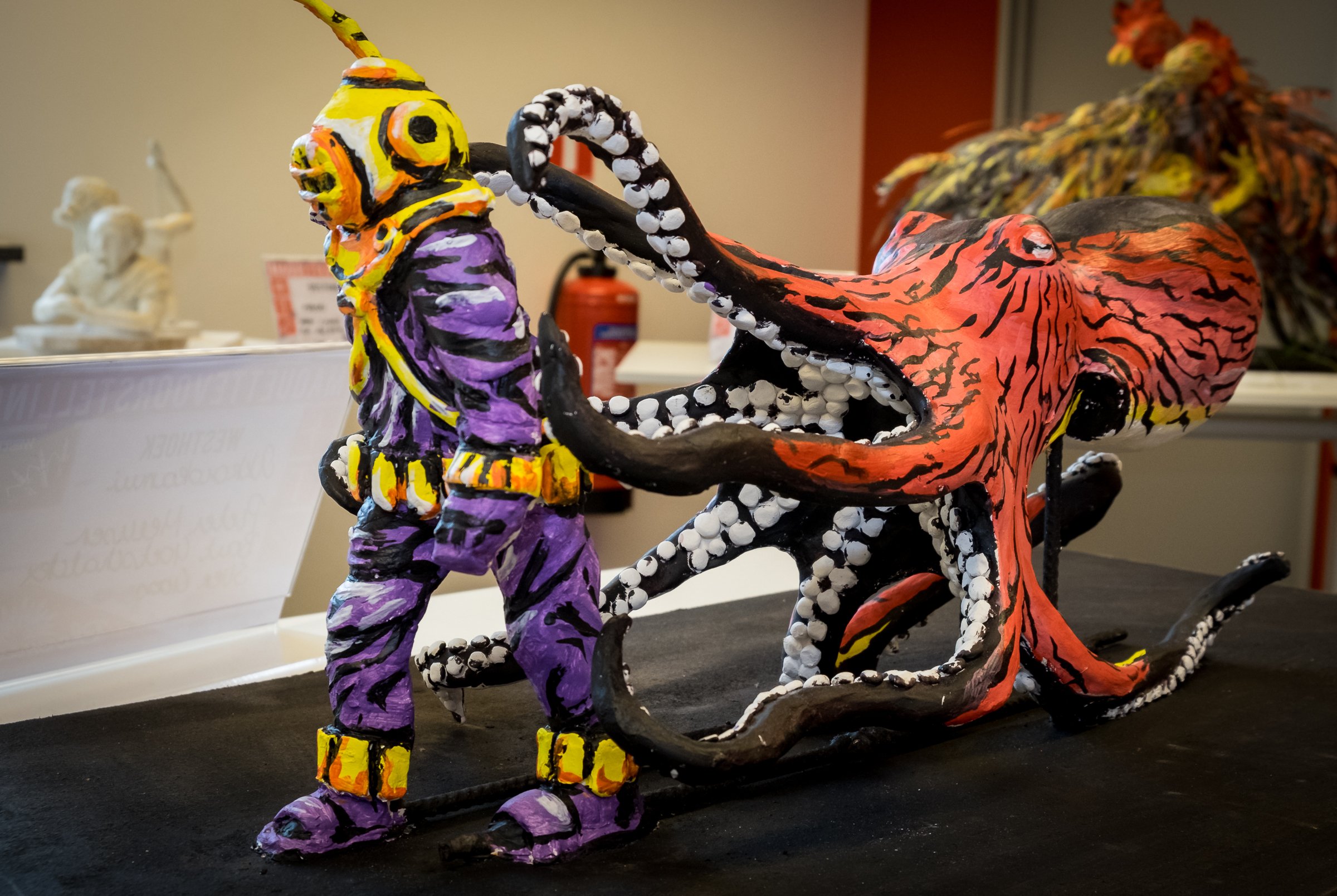
The flowers
No flower parade without flowers. This year, Bloemencorso Loenhout had about 3 million dahlia flowers. We don’t grow all those flowers ourselves – that would require way too many flower fields. No, we’ve teamed up with other corso’s in Belgium, The Netherlands, and even Germany to share flowers. When it’s our time, they sent us all the flowers they have. When it’s their time, we sent our flowers to them.
This year’s drought was disastrous for us. We had no way to water our flower fields, and when September rolled around, our flowers were small and scourged. Luckily, other corso’s were in better shape and helped us out. A costly affair to buy so many flowers instead of growing them themselves, but we made it work.
Speaking of work, tending to all those flowers requires quite the effort. They are planted at the beginning of May. Plans are drawn up where which type is planted, and weeds must be cut to keep everything tidy. Then there is all the flower picking, which, of course, is done by hand. Afterward, the tubers are dug up and stored for the winter.
Building
The yearly barbeque marks the start of the Corso season. The tent is erected, and the chassis is dusted off. It’s time to start building! Unfortunately, I’m not much help these first few weeks. Building a 15 meter long and 10 meter high float requires some serious construction welding. I can weld a bit (Yes, that’s me in the picture below!), but not very good and no way am I going to risk the safety of other with my bad welding. So, I wait a few weeks until the “skeleton” of the float is built and the work on the frame starts. If we’re on schedule, this should be around the beginning of August.
Building the float consists of three stages: construction welding, frame welding, and paper macheing the whole thing. The entire float is covered in at least six layers of paper mache. It requires kilos of newspaper, gallons of glue, and thousands of hours of volunteer work from many people, but we all love it.

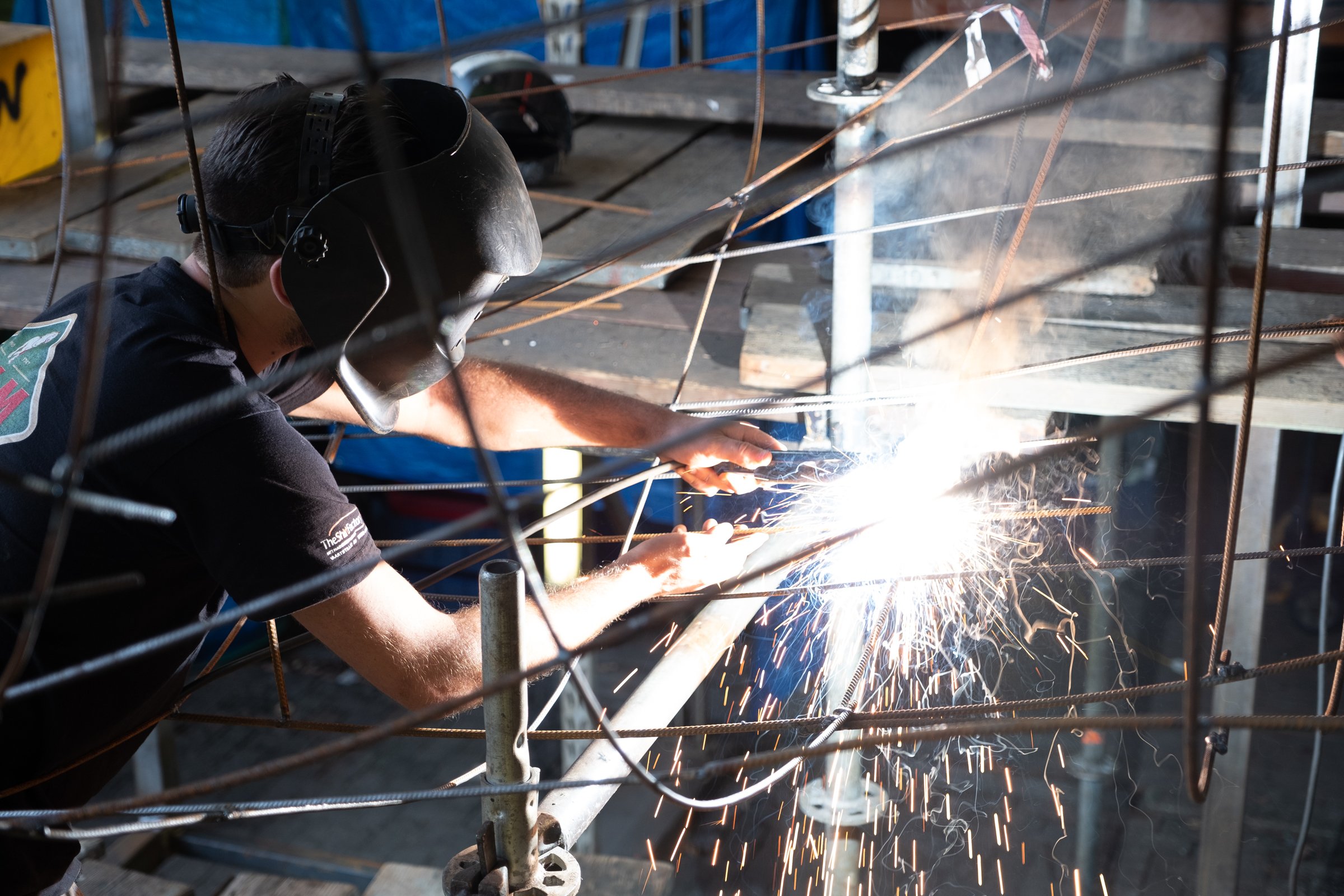

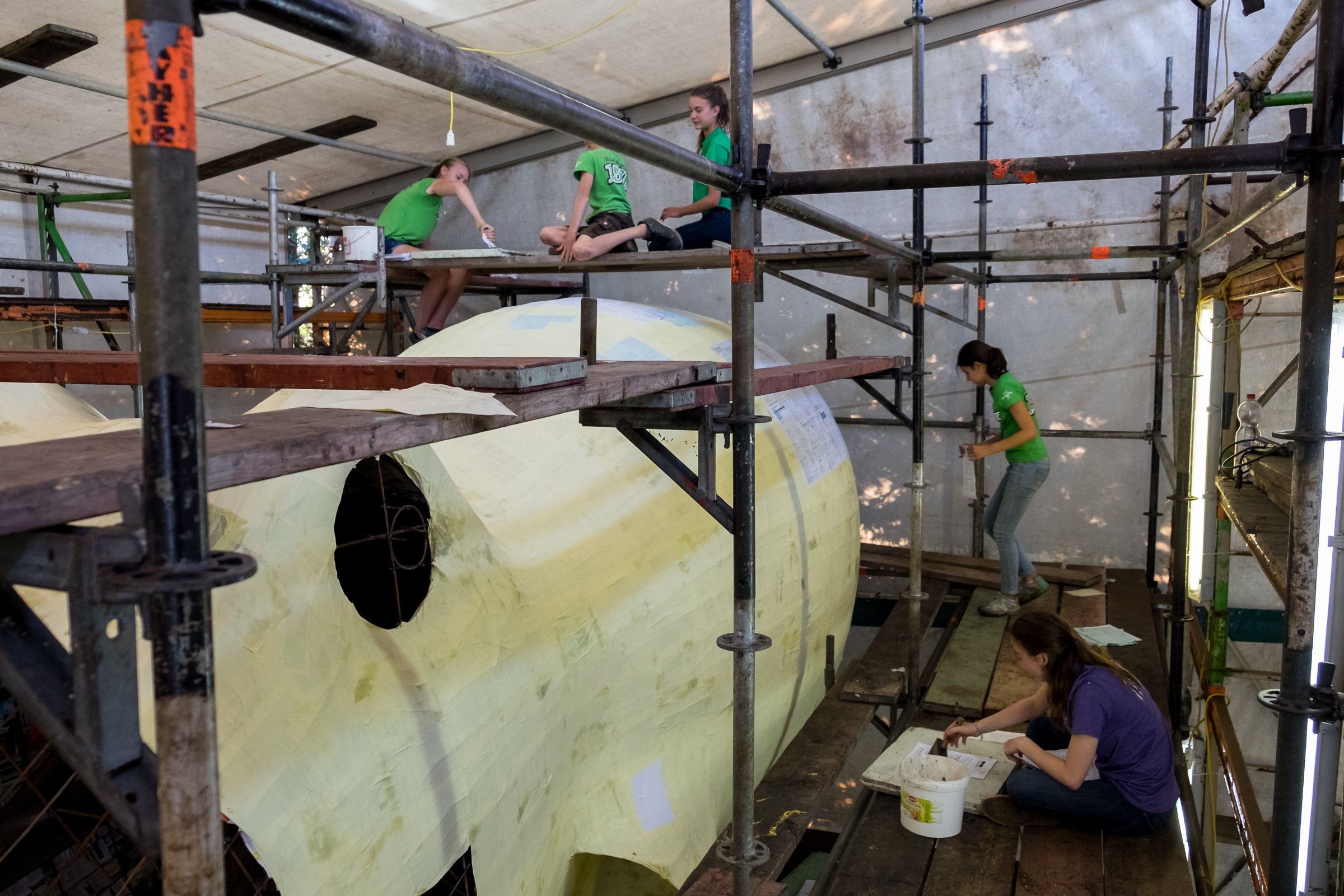
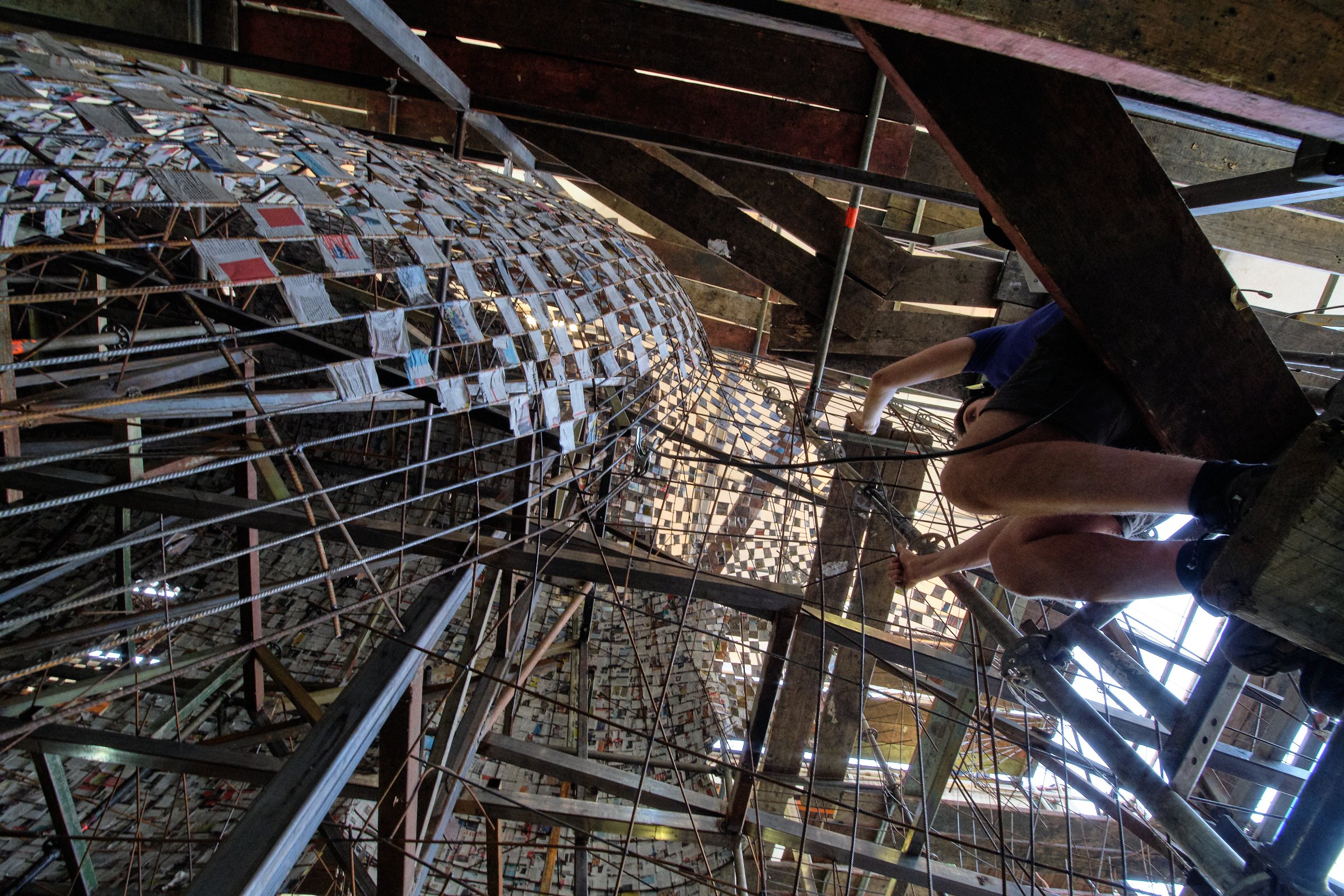

Decorating
A newspaper float wouldn’t be very attractive, so that’s when the decorating comes in. The first step is painting. Painting has two purposes: making clear to the volunteers where which color of flower is supposed to go and, in the case of flowers falling out during the parade, trying to hide it by having the same background color as the flowers.
The next and final stage is where the hundreds of volunteers come in. In just 2 days, the entire float is covered in thousands and thousands of dahlia flowers. Each flower is stuck in the paper mache with a nail by hand. We start on Friday and often work until early morning Sunday. It’s a race against time, because on Sunday morning, the float must enter the parade. However, you can’t start too soon by sticking the flowers on the float, because they’ll shrink and wilt. It’s a massive undertaking that requires a lot of planning and hundreds of volunteers.
The parade
The parade itself is pretty straightforward. In the morning, all the floats line up in the middle of the village. At 14:00, the children’s floats start off the parade. You can expect a lot of minions, Grease, and firetrucks. In between are street artists, clowns, marching bands and carts giving out free ice cream for children. As the parade progresses, the floats get bigger and bigger… until we come to the “corsowagens”. The corsowagens are the biggest floats, and therefore usually the most impressive to watch. See a selection below of some of our corsowagens from recent years.







Behind the scenes stuff
Building a float costs a lot of money. That’s why we also do some fundraising. Each year, we help out at a local festival called De Straatfeesten. We also organize a resting place for a local bicycle tour, De Schakel. All of this takes a lot of effort behind the scenes that most people don’t see.
And let’s not forget those who provide us with food and drinks during this insane decorating weekend. It takes a lot of planning to run such an organisation as a well-oiled machine. There’s also tending to the flowers, building the tent, getting materials, finding the right music, making sure everything is in order with the insurance, … The list goes on and on, and this amazing flower parade wouldn’t be possible without all those invisible heroes.
Practicalities
I hope I convinced you how awesome this yearly flower parade is and that you’ll join me next year. Bloemencorso Loenhout rides out every second Sunday of September. You can buy tickets online at this website. See you there!

